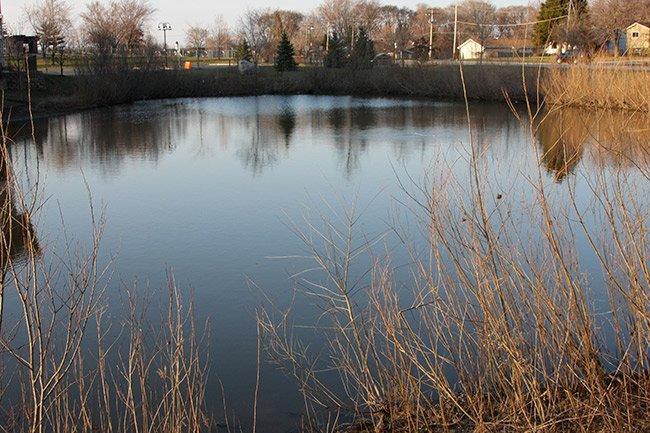Like most fishermen, I never have enough time to fish.
I’m blessed to be able to fish some of the best waters in the world on assignments for B.A.S.S. and the Traveling Angler section of my Small Waters Fishing blog. But when assignments and circumstance conspire against my angling, I have to steal hours here and there on small local waters to feed my fishing fever and to keep pace with tackle and technique.
Now these small waters encounters can be guiltless love affairs, and very sweet ones, at that. Such rushes to freedom can turn into exploratory adventure on local park lakes, backwaters, residential and development lakes, forest preserve waters, golf course ponds, and small streams, reservoirs, and natural lakes wherever I can find them.
The number and, often, the size of the bass I encounter on nondescript waters that tens of thousands of people pass without notice every day bedazzles me!
Because I rarely spend more than a few hours at a time on these waters and may even fish several such waters in a day or even a mere morning, finding fish quickly is of paramount importance.
Fortunately, finding prime fish hangouts is not that difficult – particularly on waters that get minimal fishing pressure.
Here are a few principles I follow and some of the more obvious and reliable places always worth checking out.
Go with the flow
Current and wave action bring food to the fish and oxygenate water, too.
Inlets and outlets – Look for inlet and outlet streams to hold baitfish, insects, and crayfish. Nutrients and sediment gather here as well, which often means better habitat and cover to go with the smorgasbord. Low water periods may diminish their productivity, but be sure to check them out whenever there is flow.
Culverts and ditches– Runoff pipes can bring water and current, too. They can be particularly productive after rains. Often their current cuts a channel well into the lake or river. This creates subtle structure that many anglers will overlook. In the last hour of daylight in 2011, I cast a jig far into a local lake at a point where I projected a drainpipe runoff channel to reach. I was rewarded with a four-pound-plus bass. Happy New Year!
Windy shores – Wind, too, stacks plankton and insects, which, in turn, attract baitfish and predators. Wave action produces oxygen and also breaks sunlight penetration, activating fish.
Aerators – Lakes susceptible to summer or winter kill often have aerators to keep oxygen levels high and to prevent freezeout. These are boom or bust areas, but keep them in mind. At times they can hold big concentrations of fish.
Take the rocky road
Many waters, natural or manmade, feature rock concentrations along the shoreline to prevent erosion and to buttress banks.
Rip rap – Rock and slabs of broken concrete are often placed in heavy concentration along dams, levies and along banks vulnerable to heavy wave action or runoff erosion.
Round rock reinforcement – Property owners often place smaller and more decorative rock along their shorelines for aesthetic purposes as well as for bank protection. Often this round rock extends well below the waterline to create prime habitat. Where banks are relatively steep, much of the rock will roll into the water over time, extending the rock structure further into the lake That makes for happy crayfish homes and bigger bass banquet tables!
Structural elements
The same principles of structure fishing that hold on big reservoirs and lakes apply to small waters, too.
Shallow flats – An extended flat on a small lake may host the lion’s share of the spawning for multiple fish species. They may also be prime feeding areas depending on the habitat they host. Find ’em. Fish’em!
Mini-points – Many development lakes have relatively even and featureless shorelines. But look carefully as you walk their perimeter and you may find small projections of clay, sand or rock. Work the point and its sides, and then work the adjacent area where bass may be holding before making a minor foray onto that tiny piece of structure.
Cover
Deadfalls, moss, emergent and submerged vegetation and other forms of cover can be key attractors.
Matted vegetation – Many small waters accumulate mossy algae fairly early in the year, and it may come and go throughout the season depending on weather and water conditions and the treatment of the land and water managers. Often this is prime frogging and pitching water, and the outside edge invariably holds concentrations of fish.
Deadfall – Trees, brush, and overhanging limbs are always worth working carefully.
Docks and other manmade cover – Even tiny docks can hold fish, but the usual rules on dock fishing still apply. That is, more complex structures that come close to the water hold more fish. And wooden docks often out-produce those made of metal.
As for “other” manmade cover, see that shopping cart laying at the edge of the drainage pond? Chances are a bass will be waiting for you there.












